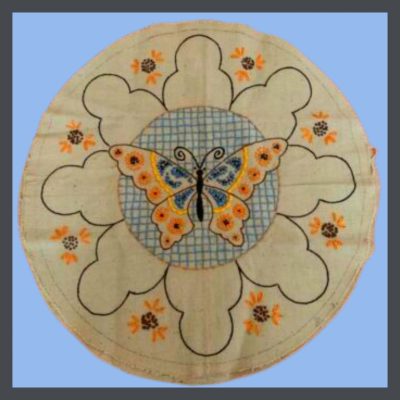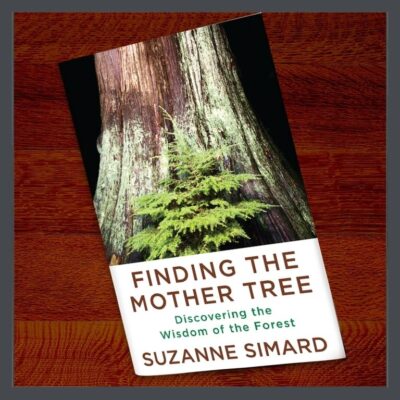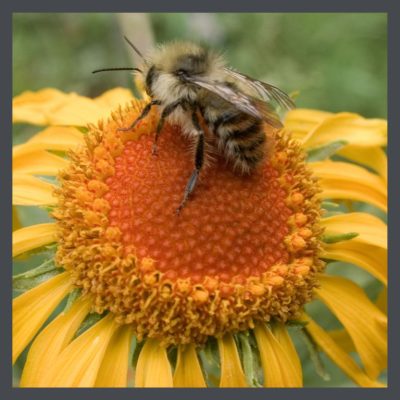 Using native landscaping for your bungalow is eco-friendly, easier care & a beautiful complement to your house of natural materials.
Using native landscaping for your bungalow is eco-friendly, easier care & a beautiful complement to your house of natural materials.
“Everything made by man’s hands has a form, which must be either beautiful or ugly; beautiful if it is in accord with Nature, & helps her; ugly if it is discordant with nature.” -William Morris, considered to be the founder of the Arts & Crafts Movement.
The Movement was a reaction to the Industrial Revolution which had generated new opportunities & economic growth, but also introduced pollution on a scale not yet experienced on our planet. As well, the increased production of materials demanded that we utilize our natural resources at an unprecedented pace.
Our environment is under even greater stress today. More & more species are becoming extinct. The Monarch butterfly was recently placed on the endangered list!
So how can we plant gardens to be, “beautiful if it is in accord with Nature, and helps her.” How can we be in accord with our natural world? By considering native landscaping for your bungalow.
WHY USE NATIVE LANDSCAPING FOR YOUR BUNGALOW?
 The United States National Arboretum defines a native plant as “one that occurs naturally in a particular region, ecosystem, or habitat without direct or indirect human intervention.” And, how are they beneficial to our natural world?
The United States National Arboretum defines a native plant as “one that occurs naturally in a particular region, ecosystem, or habitat without direct or indirect human intervention.” And, how are they beneficial to our natural world?
The California Native Plant Society states, “These plants have coevolved with animals, fungi and microbes, to form a complex network of relationships. They are the foundation of our native ecosystems, or natural communities.”
This coevolution is the key. Evolution, in biology, is defined as the change in the characteristics of a species over several generations & may result in changes which give the individual an advantage in survival which they can then pass on to their progeny. Coevolution occurs when two species, or groups of species, evolve alongside each other, adapting to changes in the other, giving one another an advantage in survival. These changes could be caused by any source- climate, air & water quality, natural disasters such as fire, pathogens affecting any part of the group, etc. So here we have this nice little group of plants, animals, (including insects) fungi & microbes all working in harmony for the mutual survival of all, making adjustments every generation as together they fine tune their abilities to survive & multiply. It’s the ultimate in cooperation!
A prime example of this is the relationship between flowering plants & insects & birds that pollinate them. The flowering plants have developed adaptations that allow them to attract pollinators, & there is evidence that some flowering plants sweeten their nectar when they perceive the buzz of a bee. The insects and birds have also developed specialized adaptations for extracting nectar & pollen from the plants.
Flowers & their flitting pollinators were a common theme in the textiles & pottery of the Arts & Crafts Movement- bees, butterflies, birds. Life & its creations were considered precious in the Movement & the natural world with its beauty & vitality were exhaulted in their art.
IN THE FOREST, THE ULTIMATE NATIVE GARDEN
Suzanne Simard a descendant of loggers, now a professor of forest ecology at the University of British Columbia, is one of the first women in the industry & has made some monumental discoveries about the wisdom of trees. In an interview on NPR she states, “Keep in mind that all trees and all plants — except for a very small handful of plant families — have obligate relationships with these fungi. That means that they need them in order to survive and grow and produce cones and have fitness — in other words, to carry their genes to the next generations. And the fungi are dependent on the plant or the trees … because they don’t have leaves themselves [for photosynthesis]. And so they enter into this symbiosis in that they live together in the root, and they exchange these essential resources: carbohydrates from the plant for nutrients from the fungus, in this two-way exchange which is very tight, almost like a market exchange.
a descendant of loggers, now a professor of forest ecology at the University of British Columbia, is one of the first women in the industry & has made some monumental discoveries about the wisdom of trees. In an interview on NPR she states, “Keep in mind that all trees and all plants — except for a very small handful of plant families — have obligate relationships with these fungi. That means that they need them in order to survive and grow and produce cones and have fitness — in other words, to carry their genes to the next generations. And the fungi are dependent on the plant or the trees … because they don’t have leaves themselves [for photosynthesis]. And so they enter into this symbiosis in that they live together in the root, and they exchange these essential resources: carbohydrates from the plant for nutrients from the fungus, in this two-way exchange which is very tight, almost like a market exchange.
If you give me five bucks, I’ll give you five bucks back. It’s very, very tightly regulated between those two partners in the symbiosis. But, yes, all trees and all plants in all of our forests around the world are dependent on this relationship.”
Now look at this over a span of millions of years. Generation after generation of trees are assisted by beneficial fungi which, in turn, feed on their fallen sisters. Every generation their abilities are expanded & their bonds strengthened.
PLEASE CONSIDER NATIVE LANDSCAPING FOR YOUR BUNGALOW
 It is plain to see that life supports life. Darwin’s theory of survival of the fittest missed the important point that the fittest are the most cooperative. Cooperation is a natural activity, though we see far too many examples in which it is lacking. My grandmother was a farmer’s daughter & a rosarian, but foremost, she was a teacher. In turn I learned about trees & gardens from my mother. My brother is a Master Gardener. Gardening with your children & grandchildren provides an opportunity to teach them about living in cooperation with their fellows & with our Earth.
It is plain to see that life supports life. Darwin’s theory of survival of the fittest missed the important point that the fittest are the most cooperative. Cooperation is a natural activity, though we see far too many examples in which it is lacking. My grandmother was a farmer’s daughter & a rosarian, but foremost, she was a teacher. In turn I learned about trees & gardens from my mother. My brother is a Master Gardener. Gardening with your children & grandchildren provides an opportunity to teach them about living in cooperation with their fellows & with our Earth.
As a gardener, you can contribute to this circle of life by planting natives. Your climate- temperature, rainfall, seasonal changes- is already in place for it. The make-up of your soil – clay, sandy, silty, peaty, chalky or loamy- is already there. The microbes that were there 100 years ago which developed to assist the indigenous plants are disturbed but you can coax them back to health by planting the species that were at home in your area for hundreds of years, themselves evolving to support the survival of the native microbes.
Planting species indigenous to your area, utilizes all the environmental conditions to their greatest effect because they evolved under these conditions. Their pollinators will return. Your plants will like ‘em & they will thrive with little fuss from you!
Please visit Wild Ones because they can help you get started. These wonderful folks provide resources for purchasing native plants, native garden plans, webinars- pretty much anything that you might need to get started with your new adventure in native landscaping for your bungalow. You can also call your local County Extension Service for advice & if you need help in figuring out which plants would be most attractive with your color scheme, this article on color basics will help.
TIP: Learn more about the Arts & Crafts Movement HERE!
 STAY IN THE BUNGALOW KNOW!!!
STAY IN THE BUNGALOW KNOW!!!
Sign up for our newsletter & receive our FREE E-book, 7 VITAL Things to Do Before You Hire a Contractor.



0 Comments